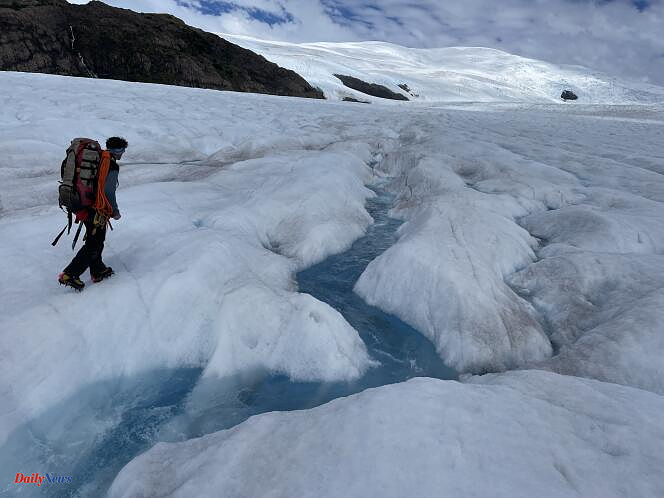How can we not think of The Mysterious Star, by Hergé, when we see two small round white and red mushroom-shaped tents, placed on an austere bank, facing a dark ocean. We are at the base camp of the Center Terre association, established in the extreme south of Chilean Patagonia, to explore the island of Madre de Dios, with its unique geology.
In place of Tintin and Snowy, around forty speleologists, archaeologists, geologists, biologists, aged 24 to 72, came to carry out a scientific mission – Center Terre's ninth.
After a first report in 2017, Patagonia: the forgotten island, the documentary filmmaker Gilles Santantonio returned to this place on the edge of the still unexplored 1% of the Earth, accompanied this time by Maria Isabel and her uncle Francisco, two of the last representatives of the Kawesqar indigenous people. His film takes us through the unvarnished daily life of a two-month expedition, between the imagination of the end of the world and the reality of climatic and environmental conditions.
With a visible concern to integrate the viewer into the adventure, the documentary opens with the working meeting around Bernard Tourte, expedition leader. Then he follows the journey aboard the three boats from Puerto Eden to Madre de Dios, 100 kilometers away. “In unsurprising weather: execrable,” says the voiceover.
Three tons of food
Is it classicism? The commentary borrows from the formatted phrasing of French documentaries – something we quickly forget in contact with these sincere and enthusiastic men and women, including Richard Maire, co-scientific leader of the expedition.
What is concrete is the mobilization of everyone to unload 3 tonnes of food and materials; the dream is the white peaks in the distance. It is not snow, but a limestone that resembles marble, which appeared eighty million years ago, when the Andes mountain range rose from the ground, and has since been shaped, dug and grooved by the 'water.
The first expedition is speleological, led by geologist and paleontologist Charlotte Honiat and Tanguy Racine. The camera follows them with difficulty underground, in the very narrow passages of a mineral maze, dripping and covered with mud, in order to take sediment samples. Smiling and full of humor, they make fun of the cold and their soggy clothes.
On the surface, another group found a humpback whale carcass. Under the rain. Which revives Francisco's memories. He doesn’t know when he was born, but he lived here: “As far back as I can remember, it rained every day, every month of the whole year. » Led by Natalia Morata, the expedition leader for Chile, they then set off in search of the former house of Maria Isabel.
“Marble Glacier”
Of the nine expeditions carried out in two months, one of the most spectacular was that carried out to the Calvo estuary to approach the HPS35 glacier. Notably the abseiling, along the walls, of speleologists Laurence Boudoux d’Hautefeuille and Arnauld Malard – they will set a new depth record, at – 75 meters.
Another unreal moment, the discovery of a blue ice cave under the glacier. The technology is also impressive. Tanguy Racine thus positions targets in order to model the cavity, which will then allow him to study the glacier from his laboratory.
Drones have also revolutionized their work. From an artistic point of view, aerial views of the “marble glacier” appear drawn in black and white. Only a few orange or blue dots are visible: the researchers.
Their progress is slow and delicate. Marine biologist and ecologist Raphaël Seguin takes DNA samples in the hope of finding non-visible animals living in these caves and underground passages, the only places on earth where we can still “tread the unknown”.
So far, twenty-nine caves that housed Kawesqar men or burials have been identified. We learn that Maria Isabel weaves baskets for tourists, but also that there are plenty of scallops to catch.
After each mission, everyone meets at base camp, the promise of warmth and comforting food. With a bonus, for the last dinner, foie gras, cut with a caliper: it’s a tradition! Waiting for the next shipment.












